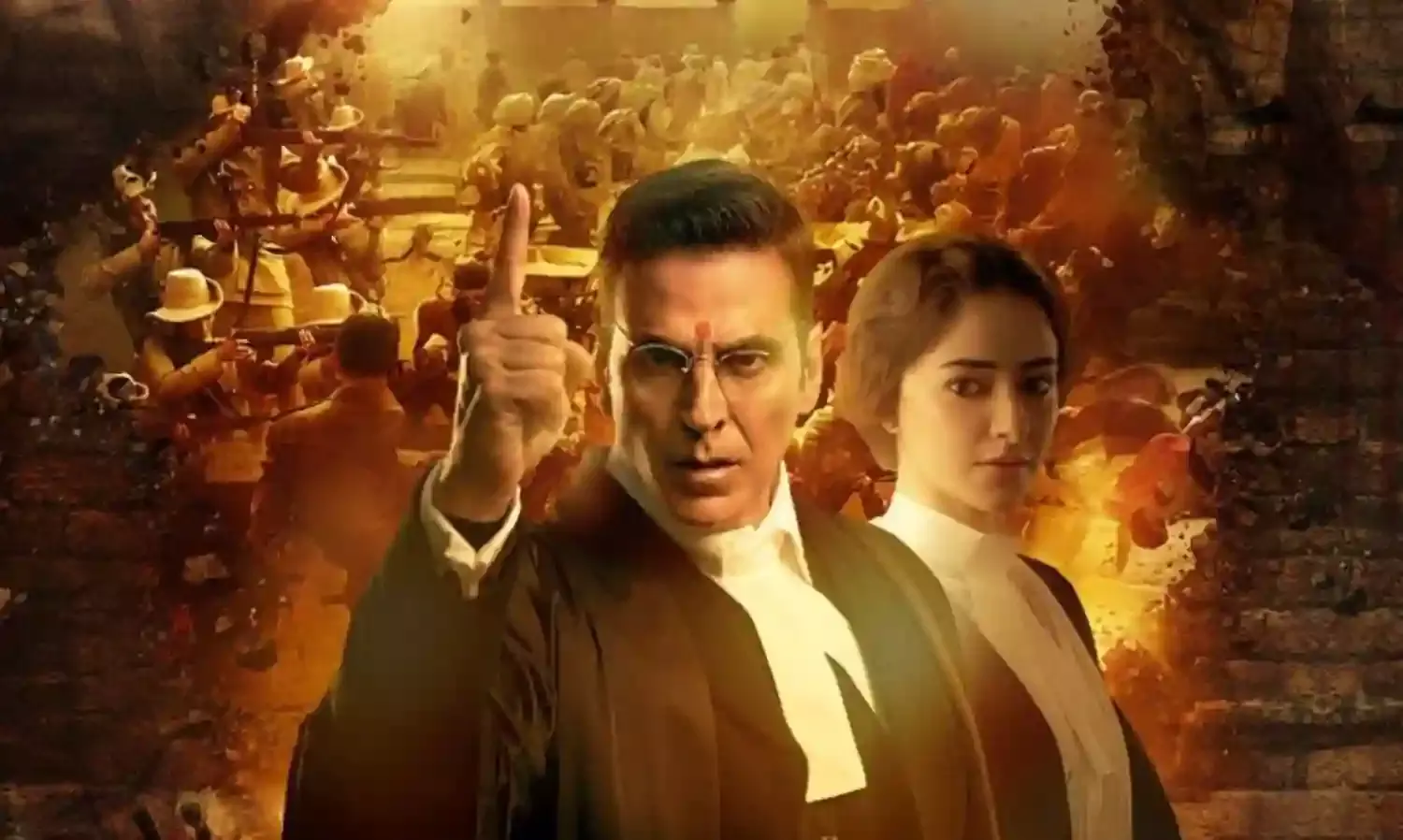Less Fact And Lots Of Fiction But Worth A Watch
Kesari-Chapter 2

Films falling within the genre of ‘historical fiction’ turn up, in most cases, into cups of historical tea punched with large spoonfuls of sugar-coated fiction. Kesari – Chapter 2 brings out from historical cold storage, one C. Sankaran Nair whose name most of us seem to hear for the first time in relation to the man responsible for turning the “guilty” verdict to ‘non-guilty’ by the jury in the re-trial of General Dyer for the historic Jallianwalla Bagh massacre that happened on April 13 1919.
Though he was knighted by the British Government for winning a case against them and was also made a member of their Advisory Council, he took courage in his hands to become the co-lawyer of a Punjabi lawyer Diljeet Kaur (Ananya Pandey). This after he personally visited the site of the massacre and saw the remains of the mass killing planned, manipulated and executed by Reginald Dyer with solid support from Sir Michael O’Dwyer the Lieutenant Governor of Punjab, British India, between 1913 and 1919. O'Dwyer endorsed Reginald Dyer's action at Jallianwala Bagh and made it clear that he considered Dyer's orders to shoot at the crowds was correct.
Akshay Kumar who portrays Sir C Sankaran Nair, is introduced as a trained Kathakali and Kalaripyattu performer in his home-state Kerala for what reason no one knows because this has no connect with the main narrative of the film. Is it to bank on his star value in the mainstream? Or, perhaps to enlarge his versatility as a non-action and non-gimmicky actor?
Kesari- Chapter 2 is a mainstream film pretending to be an intense patriotic film restoring history, adding to the sudden surge in the revival of films depicting ‘heroes’ of the Independence movement not heard of before or, for those heard of, with a lot of negativity written into their characters turned into positive heroes in these films.
Karan Singh Tyagi’s film, directed by him and written jointly by him and Amritpal Singh Bindra, is adapted from The Case That Shook the Empire by Raghu Palat and Pushpa Palat. The non-fiction book explores the real-life C Sankaran Nair’s legal battles against the British in the aftermath of Jallianwala Bagh.
The film begins with the time just before the massacre of a peaceful crowd of Hindus, Sikhs and Muslims who had gathered to protest the Rowlatt Act. The exit gates were closed so they could not escape when Dyer ordered “fire” killing little children with their mothers till the British ran out of firearms.
The blood and gore and mass killing forced many who could not escape jump into a large well within the park with a single young Sikh boy pulling himself out of a number of corpses to raise his voice through a peaceful protest with his ‘live’ newspaper demanding justice and freedom from the British. He is the son of Kirpal Singh, a noted freedom fighter imprisoned for his anti-British stance.
The film picks up both speed and action once the story steps into the court to unveil the courtroom drama. Once Madhavan steps into the portals of the court as Neville, the lawyer fighting to protect Brigadier Reginald Dyer. This is portrayed brilliantly by Simon Paisley Day. Why he hates Indians with every drop of his blood is explained through his boyhood experience of being ragged by Indian students at his Shimla school which has turned him bitter against “native Indians” forever.
In the same manner, Neville does not like Sankaran Nair because he lost his ‘right’ to knighthood and to membership of the British Advisory Council because the shadow of illegitimate birth, not proven anywhere in the film, becomes a block in his vertical growth by the British rulers.
The fight is as exciting as it is mainstream, not to forget the shouting and the screaming which is never allowed in any court argument anywhere across the world. The bombing of his final arguments filled with the F-word directly attacking the judge makes one question not just the propriety of courtroom ethics but also about the credibility of the F-word which probably was non-existent in the English lexicon during the time depicted in the film.
Then, why this gimmick? Were the members of the Board of Film Certification fast asleep when the film was being screened?
Ananya Pandey’s Diljeet Kaur, a very well-controlled and subdued performance underlined by the anger at the proceedings and awkwardness of a beginner becomes entirely a commercial gimmick when she questions a British lady about her rape by an Indian soldier which turns out to be entirely false and the lady breaks down in court, embarrassing the defense.
This will perhaps push up the box office takings as it seems to have been inserted mainly for its box office value. It turns out that the entire accusation was false simply to imprison the soldier who had the gumption to fall in love with a White woman. One only wishes that Ananya Pandey’s beauty had been left at that without the tons of make-up she has had to use.
Akshay Kumar is a bit loud but otherwise throws up a convincing performance and of course, Madhavan as the forever drinking, self-retired lawyer living in frustrated loneliness is as good as he always is. Despite the beard and the long hair, he manages to look strikingly handsome and keeps his arguments tinged with more satire and sarcasm than anger, unlike his rival in court.
Amit Sial as the Indian “cutlery” in the British lobby enlivens his negative role with just the right mixture of buttering up the British and being arrogant with the “natives.” Regina Cassaandra as Nair’s intelligent and understanding wife is marginalized in the film and the two kids are seen from a distance only in a blink-and-you-miss-it scene in the end.
This is a film which should have cut songs completely and preferably kept a low-key background score because the script, real and fictional, is both loud and interesting enough to keep the audience captive through its running time of 135 minutes.
The editing is like a sharp, edged knife as it often moves back in time and space to the bloodied and inhuman violence committed not only on men, but also on hundreds of women and small children in Jallianwalla Bagh. The flashback to the Sikh teenager’s killing by four British soldiers to ‘silence’ him is a bit too brutal to watch after all the flashbacks to the massacre.
The cinematography sticks to greys and blues to invest this film with the right mood of tragedy, resistance, abuse of power and of course, the court. The production design sticks aptly to the ‘period’ ambience of the film and the old court buildings, the offices and even the prisons bring alive for us a distant past we have read about but never experienced.
I was hesitating to go and watch this film because Akshay Kumar always scares me off for his pro-Establishment agendas in most of his films. But I rather liked him in this one because despite allowing his vocal chords the topmost priority in his role of C. Sankaran Nair, he is quite likeable in the film. And looks handsome too which he naturally is. The Ram Navami reference is entirely fiction and we all know why it has been used inspite of its fictitious quality.
The film has been produced jointly by Dharma Productions and Adar Poonawala, which promises and provides a very entertaining courtroom drama post-interval. If you are interested in history, you may give the film a miss. But if you are seeking entertainment disguised as history, go and watch it. The usher whispers, “Sankaran lost the case in actuality.” Think about it.



